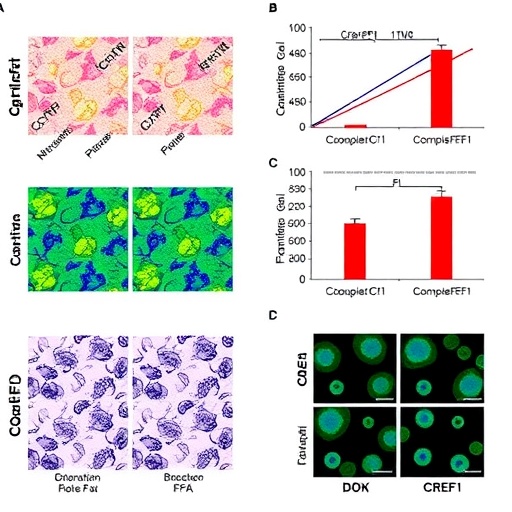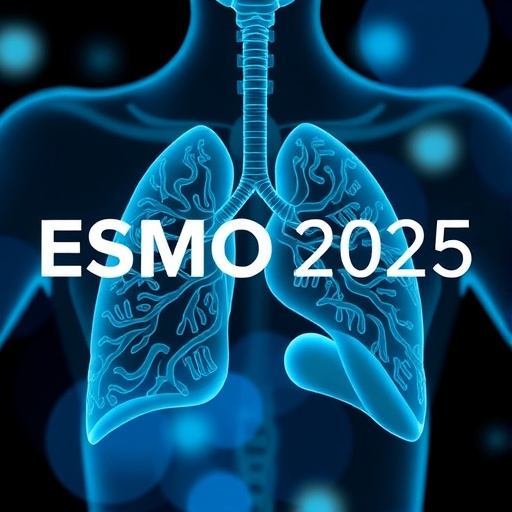In the relentless pursuit of more effective and less toxic treatments for acute myeloid leukemia (AML), a recent comprehensive meta-analysis sheds new light on the comparative benefits of Venetoclax combined with hypomethylating agents (VEN-HMAs) versus traditional induction chemotherapy (IC) in patients newly diagnosed with AML. Published in BMC Cancer, this extensive review synthesizes outcomes across multiple studies, offering a critical appraisal of therapeutic efficacy and survival advantages in a disease notoriously challenging to treat.
Acute myeloid leukemia, a malignant hematologic disorder characterized by the rapid proliferation of abnormal myeloid cells, demands early and intensive treatment strategies. The classical mainstay has been induction chemotherapy, aiming to induce a complete remission by eradicating leukemic blasts. However, the substantial toxicity and often dismal outcomes, especially among older patients or those with adverse genetic markers, have led to the exploration of reduced-intensity regimens. VEN-HMAs, which leverage the apoptosis-inducing properties of Venetoclax alongside epigenetic modifiers, emerge as a promising alternative, but their clinical benefit relative to IC has remained ambiguous until now.
Contrary to expectations that VEN-HMAs might substantially outperform induction chemotherapy in initial response rates, the analysis revealed no statistically significant differences for complete response (CR) or the combined endpoint of CR with incomplete blood count recovery (CRi). The risk ratios hovered near unity, suggesting equivalence in achieving remission between the two therapeutic approaches. Similarly, the overall response rate (ORR) and 30-day mortality did not differ appreciably, underscoring that the safety profile of VEN-HMAs does not compromise early treatment outcomes.
Where VEN-HMAs demonstrated a compelling advantage was in the domain of overall survival. The hazard ratio of 0.80 indicated a 20% relative reduction in mortality risk compared to induction chemotherapy among the broad cohort of newly diagnosed AML patients. This survival benefit was particularly pronounced in the subgroup harboring nucleophosmin 1 (NPM1) mutations, a genetic aberration frequently associated with better treatment responsiveness and prognosis. In this subset, VEN-HMAs reduced the risk of death by 36%, suggesting a tailored therapeutic niche where the regimen’s mechanism of action aligns with molecular disease drivers.
However, the interplay between VEN-HMA efficacy and cytogenetic abnormalities proved more nuanced. Patients with RUNX1::RUNX1T1 translocations, a relatively rare but defined AML subset, paradoxically exhibited a lower overall response rate with VEN-HMAs, though survival outcomes were not significantly altered. This finding underscores the heterogeneity of AML and the imperative for genotype-guided therapeutic decisions. Notably, due to the limited number of studies focusing on this subset, firm conclusions remain premature and warrant further investigation.
Age, cytogenetic risk categories, and AML subtype – whether de novo, secondary, or therapy-related – did not materially modify the observed survival benefits, suggesting that VEN-HMAs may offer comparable advantages across diverse clinical contexts. This universality hints at the potential for VEN-HMAs to become an integral component of first-line AML treatment paradigms, particularly for patients who are deemed unsuitable for intensive chemotherapy due to comorbidities or advanced age.
The mechanism underpinning Venetoclax’s efficacy rests on its inhibition of the B-cell lymphoma 2 (BCL-2) protein, a critical regulator of apoptosis that is frequently overexpressed in leukemic cells. By restoring apoptotic pathways, Venetoclax sensitizes malignant cells to death signals. When combined with hypomethylating agents such as azacitidine or decitabine, which reverse epigenetic silencing and promote reactivation of tumor suppressor genes, this regimen exerts a multifaceted attack on leukemic cell survival. This synergy likely contributes to the observed extension in overall survival despite similar remission rates.
Importantly, this meta-analysis brings to the foreground the pressing need for head-to-head randomized controlled trials (RCTs) to definitively delineate the relative merits and long-term benefits of VEN-HMAs versus induction chemotherapy. Retrospective cohorts, while invaluable, carry inherent limitations including potential selection biases and variability in treatment protocols. Prospective RCTs could rigorously assess not only efficacy but also quality of life, toxicity profiles, and economic considerations crucial for patient-centered care.
The study’s registration with PROSPERO in July 2024 attests to its methodological transparency and adherence to contemporary standards in systematic reviews and meta-analyses. By preregistering their protocol, the authors reinforced the credibility of their findings and minimized biases that often confound retrospective syntheses.
From a clinical standpoint, these results may inform personalized therapeutic strategies, particularly emphasizing molecular diagnostics to stratify patients likely to derive maximal benefit from VEN-HMA regimens. NPM1 mutation status could emerge as a key decision-making biomarker, guiding clinicians in selecting treatment modalities that optimize survival while balancing risks.
Beyond survival metrics, the equivalence in early response and mortality rates between VEN-HMAs and induction chemotherapy offers reassurance that less intensive regimens do not compromise immediate treatment success. This is a significant consideration given the high toxicity burden traditionally associated with induction chemotherapy, which often limits its applicability among vulnerable patient populations.
The advent of Venetoclax combined with hypomethylating agents thus represents a potential paradigm shift in the management of newly diagnosed AML patients. By integrating targeted apoptotic induction with epigenetic modulation, these agents collectively address the biological complexity of AML while sparing patients the ravages of conventional chemotherapy’s side effects.
Nevertheless, caution is warranted in interpreting these findings. The heterogeneity of included studies, variability in follow-up durations, and retrospective design highlight the necessity for confirmatory evidence from well-designed clinical trials. Moreover, the impact on long-term survivorship, relapse rates, and secondary malignancies remains to be fully elucidated.
In summary, this comprehensive meta-analysis underscores that VEN-HMAs constitute a promising and at least equivalent alternative to induction chemotherapy in newly diagnosed AML, with a notable survival advantage in patients bearing NPM1 mutations. The findings provide a persuasive impetus for ongoing research and clinical trials aimed at optimizing AML treatment algorithms, moving toward a more personalized and tolerable therapeutic future.
As the oncology community eagerly awaits further robust clinical data, these insights offer hope for improved survival and quality of life in a disease that has historically been refractory to treatment innovations. Venetoclax in combination with hypomethylating agents may well be the harbinger of a new era in AML therapeutics.
—
Subject of Research: Evaluation of Venetoclax combined with hypomethylating agents versus induction chemotherapy in newly diagnosed acute myeloid leukemia patients through systematic review and meta-analysis.
Article Title: Venetoclax and hypomethylating agents versus induction chemotherapy for newly diagnosed acute myeloid leukemia patients: a systematic review and meta-analysis
Article References: Liu, Y., Zhang, Y., Gao, J. et al. Venetoclax and hypomethylating agents versus induction chemotherapy for newly diagnosed acute myeloid leukemia patients: a systematic review and meta-analysis. BMC Cancer 25, 894 (2025). https://doi.org/10.1186/s12885-025-14311-9
Image Credits: Scienmag.com
DOI: https://doi.org/10.1186/s12885-025-14311-9
Tags: acute myeloid leukemia treatmentcomparative efficacy of AML treatmentsepigenetic modifiers in cancer treatmenthematologic malignancies treatment strategieshypomethylating agents in AMLinduction chemotherapy in AMLmeta-analysis of AML therapiesnovel therapies for AMLpatient outcomes in AMLsurvival outcomes in acute myeloid leukemiatoxicities of chemotherapy in leukemiaVenetoclax combination therapy





